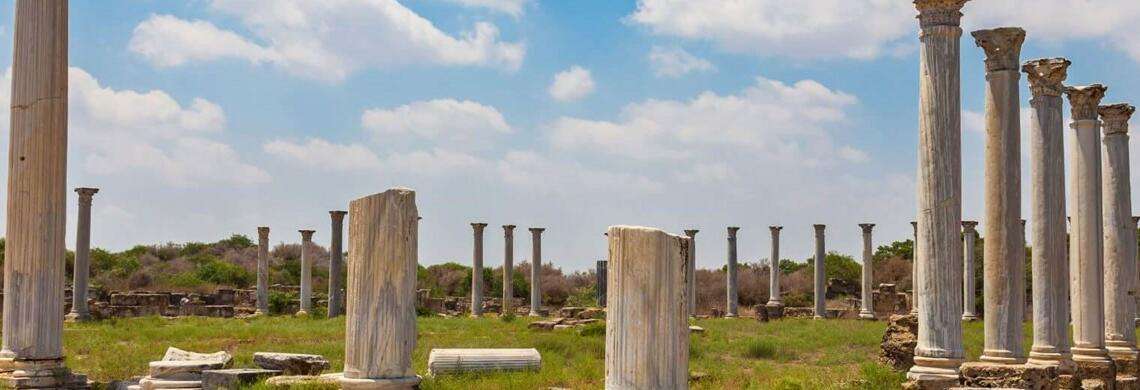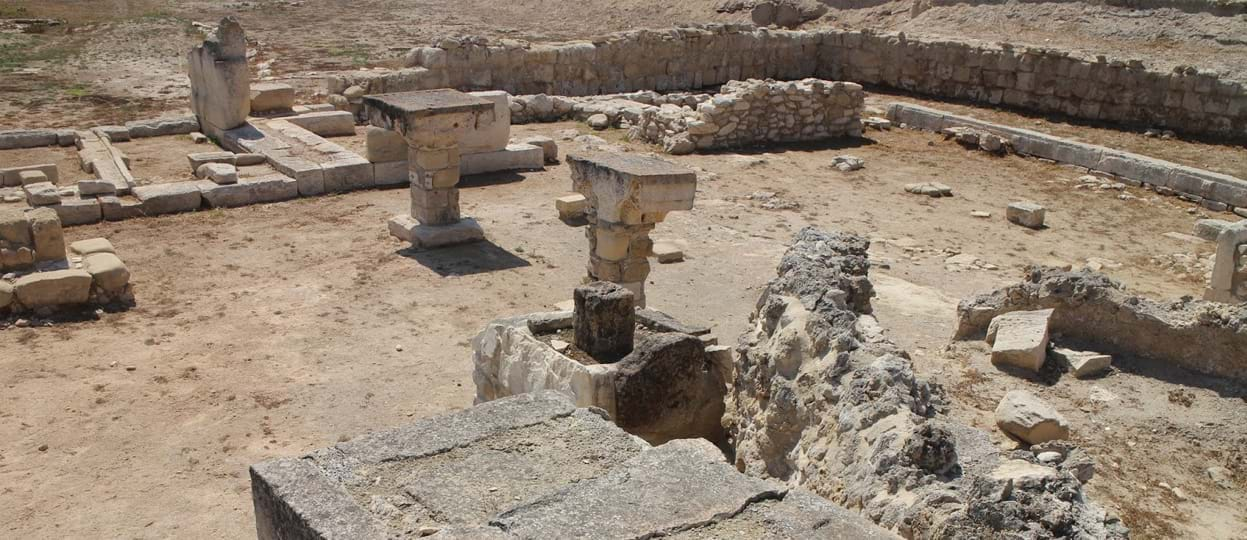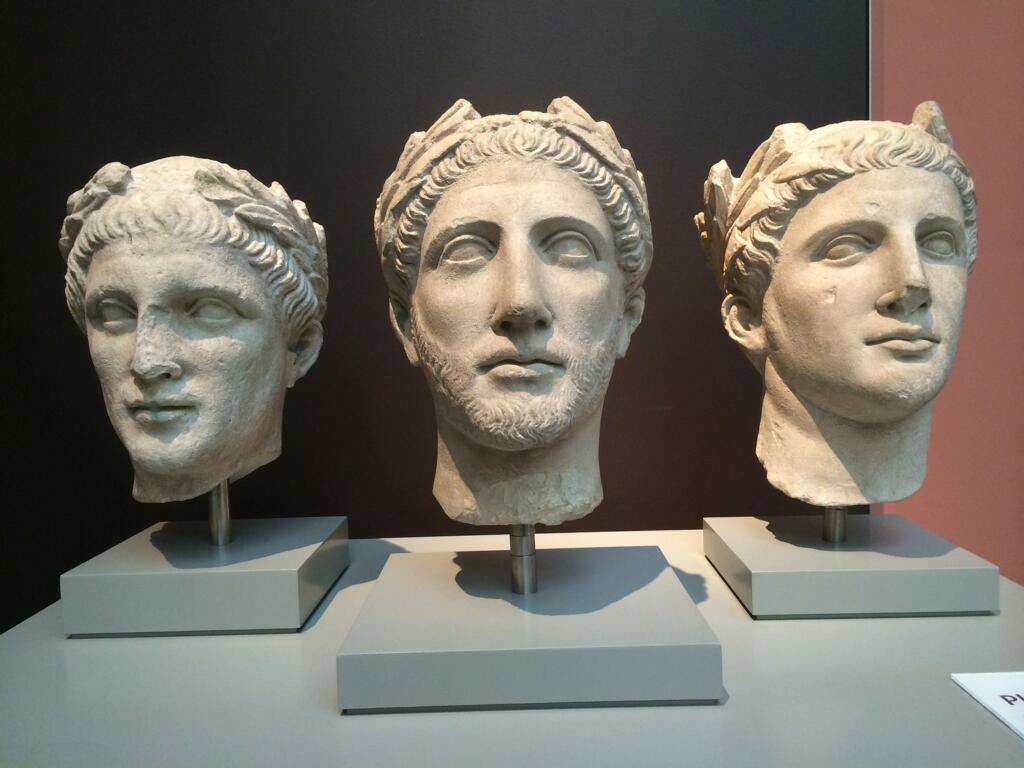Prehistoric Cyprus
The earliest evidence of human presence on Cyprus dates to around 9700 BCE. The first inhabitants were hunter-gatherers, and from 8500 to 7000 BCE, the Pre-Ceramic Neolithic period marked the emergence of settled communities. The village of Khirokitia, dating from the 6th millennium BCE, is one of the best-preserved Neolithic sites. Its circular houses, resembling beehives, were surrounded by defensive walls, offering a glimpse into early sedentary life.
The Chalcolithic Era
Around 3800 BCE, during the Chalcolithic era, minor technological advancements occurred. Copper began to be mined in small quantities, and local artisans created statuettes from picrolite, a native mineral. The era saw the transition towards more advanced metallurgical practices.
Bronze Age Flourishing
By 2400 BCE, settlers from the Near East introduced new technologies and established the first urban centers. Copper began to replace stone tools and weapons, significantly boosting trade. Cyprus prospered through extensive trading networks with Egypt and Asia, marking one of its most affluent periods.
Greek Influence
Following the Trojan War around the 8th and 7th centuries BCE, Greek Achaeans settled in Cyprus, bringing with them their language, religion, and customs. Cities like Soloi, Kourion, Salamis, Kition, and Paphos were established, becoming key urban centers.
Cypriot Kingdoms and Conquests
During this time, Cyprus fell under the influence of various rulers, including the Assyrians, Egyptians, and Persians. Notable figures from this period include the philosopher Zeno of Citium and Evagoras, king of Salamis, who fought against Persian domination in the early 4th century BCE.
Hellenistic and Roman Periods
In 333 BCE, Alexander the Great incorporated Cyprus into his empire. After his death, one of his generals, Ptolemy, took control of the island. Under Ptolemaic rule, the island was unified, with Paphos becoming the capital. By 58 BCE, Cyprus became a Roman province, leveraging its copper mines and constructing new buildings, amphitheaters, sanctuaries, and gymnasia.
Christianization and Byzantine Era
Christianity was introduced by apostles Barnabas and Paul, and Cyprus became the first state governed by a Christian Proconsul, Sergius Paulus. Following the division of the Roman Empire in 395 CE, Cyprus became part of the Byzantine Empire. Despite invasions, including those by Arabs in 647 CE, Cyprus remained predominantly under Byzantine control until 965 CE.
Crusader and Venetian Rule
In 1185, Byzantine noble Isaac Komnenos declared himself ruler of Cyprus but was overthrown by Richard the Lionheart in 1191. Subsequently, Richard sold the island to the Knights Templar, who faced local resistance, prompting him to sell it to the French noble Guy de Lusignan. Under Lusignan rule, Cyprus flourished, with the construction of churches and monasteries. However, in 1489, the Venetian Republic took control, fortifying the island but failing to secure it against Ottoman forces.

Ottoman and British Rule
In 1571, the Ottoman Empire conquered Cyprus, ruling for about 300 years. They restored the Orthodox hierarchy, suppressed the Catholic Church, and imposed higher taxes, bringing in thousands of Turkish settlers.
In 1878, Britain leased Cyprus from the Ottoman Empire, eventually annexing it in 1914 and declaring it a colony in 1925. The Cypriots hoped for union with Greece, but instead faced British colonial rule, leading to violent uprisings for independence in the 1950s.
Independence and Division
In 1960, Cyprus gained independence under the Zurich and London Agreement, with Britain, Greece, and Turkey as guarantors. However, intercommunal conflict between Greek and Turkish Cypriots led to further division. In 1974, following a Greek-backed coup, Turkey invaded Cyprus, leading to the proclamation of the Turkish Republic of Northern Cyprus in 1983, recognized only by Turkey.
Modern Cyprus
Today, Cyprus remains divided, with 37% of the island under Turkish control. Despite this, Cyprus is known for its rich history and cultural heritage, attracting visitors from around the world to its ancient sites and beautiful landscapes.
Cyprus’s layered history of diverse influences makes it one of the most captivating destinations in the Mediterranean.










